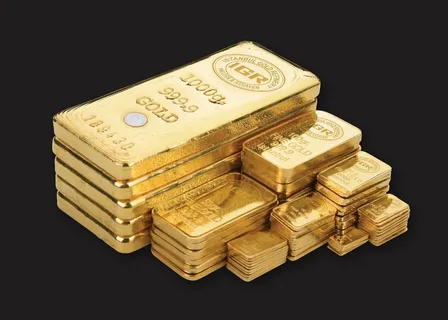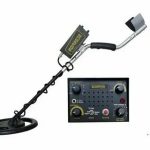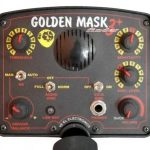Precious metals have long been coveted for their rarity, beauty, and enduring value. From gold and silver to platinum and palladium, these metals have played a significant role in human history, serving as a form of currency, a symbol of wealth and prestige, and a crucial component in various industries. In this article, we will delve into the fascinating world of precious metals, exploring their unique properties, the diverse ways they are utilized, and the factors that influence their prices. Whether you are an investor, a collector, or simply intrigued by the allure of these shimmering metals, there is much to be discovered about their enduring appeal and importance in our modern world.
Discover the Fascinating World of Precious Metals provides a comprehensive overview of the characteristics, uses, and market value of various precious metals such as gold, silver, platinum, and palladium. The course delves into the historical significance of these metals, their role in investment and finance, and their industrial applications. Participants will gain a deeper understanding of the factors that influence the pricing and trading of precious metals, as well as the ethical and environmental considerations associated with their extraction and production. This course is ideal for individuals interested in exploring the diverse and complex world of precious metals.
The Role of Precious Metals in a Diversified Portfolio
See also: detector metal
Precious metals can play a key role in diversifying a portfolio as they generally have low or negative correlation with other asset classes such as stocks and bonds. This means that when the value of traditional investments like stocks and bonds decrease, the value of precious metals may increase, providing a hedge against market volatility.
Additionally, precious metals, particularly gold and silver, have historically been seen as a store of value and a hedge against inflation. This can be particularly beneficial during times of economic uncertainty or when the purchasing power of fiat currencies is at risk.
Investing in precious metals can also provide a degree of diversification in terms of geography, as they are often mined and produced in different parts of the world, which can help mitigate risks associated with geopolitical events in a specific region.
Overall, allocating a portion of a diversified portfolio to precious metals can help reduce overall risk and potentially improve long-term returns. However, it’s important for investors to carefully consider their own investment goals, risk tolerance, and time horizon before adding precious metals to their portfolio.
Investing in Precious Metals: A Beginner’s Guide
Investing in Precious Metals: A Beginner’s Guide provides detailed information on how to get started with investing in precious metals such as gold, silver, platinum, and palladium. The book covers topics such as the reasons for investing in precious metals, the various ways to invest in them, the potential benefits and risks of investing in precious metals, and tips for choosing the right precious metals for your investment portfolio. It also includes information on where to buy and store precious metals, and how to track their market value. The book aims to provide a comprehensive overview for beginners who are interested in adding precious metals to their investment strategy.
The History and Symbolism of Precious Metals
Precious metals have played significant roles throughout history, with cultures around the world valuing them for their rarity and perceived intrinsic value. Gold, for example, has been used as a store of wealth and a symbol of power and prestige for thousands of years. It has been used to create jewelry, coins, and other decorative items, and its timeless appeal has made it a sought-after commodity in various civilizations.
Silver, another precious metal, has also held important symbolism for many cultures. In addition to its use in jewelry and currency, silver has been associated with purity and has been used in religious ceremonies and rituals.
Platinum, palladium, and other precious metals have also held symbolic value in different societies throughout history. These metals have been used to create symbols of status and achievement, as well as to adorn important religious and cultural artifacts.
The symbolism of precious metals continues to hold significance in modern society. Gold, for instance, is often given as a symbol of love and commitment in the form of wedding bands and engagement rings. Additionally, precious metals are still widely used in various industries, including technology, medicine, and manufacturing.
Overall, the history and symbolism of precious metals provide a fascinating insight into the cultural, economic, and spiritual significance of these valuable resources.
Precious Metals: A Secure Store of Value in Uncertain Times
Precious metals, such as gold and silver, have long been considered a secure store of value in uncertain times. This is because they are not tied to any specific currency or government, making them less susceptible to economic fluctuations. During times of political instability or market volatility, investors often turn to precious metals as a way to protect their wealth.
One of the main advantages of investing in precious metals is their intrinsic value. Unlike paper currency or stocks, which can lose value due to inflation or market downturns, precious metals maintain their worth over time. This makes them a reliable asset for preserving wealth and hedging against economic uncertainty.
In addition to their stability, precious metals also offer a level of privacy and confidentiality that other investments may not. They can be held physically in the form of bullion or coins, providing a tangible asset that is not subject to the same record-keeping and reporting requirements as other financial instruments.
Overall, precious metals are seen as a valuable component of a well-diversified investment portfolio, offering a safe haven during turbulent times and serving as a long-term store of value. Whether through physical ownership or investment in precious metal-related funds, many investors turn to these assets in times of economic and political uncertainty.
Exploring the Industrial Uses of Precious Metals
Exploring the industrial uses of precious metals involves investigating the various ways in which these valuable materials can be utilized in manufacturing and production processes. This includes examining their unique properties, such as conductivity and corrosion resistance, and how they can be integrated into different industries, from electronics to automotive and aerospace. Additionally, exploration in this area involves analyzing the potential for innovation and advancements in utilizing precious metals in industrial applications, as well as the economic and environmental impacts of their extraction and use.
The Future of Precious Metals in a Green Economy
The future of precious metals in a green economy is promising as these metals are essential components in the manufacturing of renewable energy technologies such as solar panels, wind turbines, and electric vehicle batteries. With the increasing global focus on reducing carbon emissions and transitioning to a more sustainable economy, the demand for precious metals like silver, platinum, and rare earth elements is expected to grow significantly. Additionally, recycling and responsible sourcing of precious metals will play a crucial role in ensuring the sustainability of their supply chain in the green economy. Overall, the role of precious metals in a green economy is likely to expand as the world shifts towards cleaner and more environmentally friendly technologies.
How to Buy and Sell Precious Metals Wisely
To buy and sell precious metals wisely, it is important to conduct thorough research and stay updated on the market trends. Familiarize yourself with the different types of precious metals, such as gold, silver, platinum, and palladium, and understand their current market value and historical price fluctuations.
When buying precious metals, consider the authenticity and purity of the metal, as well as the reputation of the seller. It is advisable to purchase from reputable dealers or accredited institutions to avoid the risk of purchasing counterfeit or low-quality metals.
When selling precious metals, be mindful of the current market conditions and the potential demand for the metal. Consider selling to reputable buyers who offer fair prices and transparent transactions. Additionally, be aware of any taxes or fees associated with selling precious metals and factor these into your selling price.
It is also important to be aware of the potential risks and fluctuations in the precious metals market and consider diversifying your investment portfolio to mitigate these risks. Overall, buying and selling precious metals wisely requires careful consideration, research, and diligence to make informed decisions.
The Environmental Impact of Mining Precious Metals
The environmental impact of mining precious metals is significant and often detrimental. Mining activities can lead to deforestation, soil erosion, and the contamination of water sources due to the use of toxic chemicals such as cyanide and mercury. Habitat destruction and loss of biodiversity are also common consequences of metal mining. In addition, the energy-intensive process of extracting and refining these metals contributes to greenhouse gas emissions and exacerbates climate change. Overall, the environmental impact of mining precious metals underscores the importance of sustainable and responsible mining practices.
The Art of Working with Precious Metals: A Craftsmanship Tradition
The tradition of working with precious metals encompasses a wide range of techniques and skills, including casting, forging, soldering, and stone setting. This craftsmanship tradition has been passed down through generations and is valued for its precision and attention to detail. Artisans who work with precious metals must possess a deep understanding of materials and the ability to manipulate them in order to create intricate and beautiful pieces of jewelry, sculpture, and decorative objects. This tradition is rooted in both artistic expression and technical expertise, and it continues to thrive as contemporary artisans combine traditional techniques with modern design sensibilities.
Understanding the Factors Affecting Precious Metals Prices
Understanding the factors affecting precious metals prices can help investors and traders make informed decisions. Some key factors include supply and demand dynamics, geopolitical instability, inflation, interest rates, and currency strength. Additionally, changes in global economic conditions and investor sentiment can influence precious metals prices. It is important to stay informed about these factors in order to effectively analyze and forecast price movements in the precious metals market.
In conclusion, the world of precious metals is a fascinating and diverse one, filled with history, beauty, and value. From the shimmering allure of gold to the practical versatility of silver, these metals have played a vital role in human civilization for centuries. Whether used for investment, jewelry, or industrial applications, precious metals continue to captivate and inspire. Exploring the properties and uses of precious metals opens up a world of discovery and appreciation for these timeless and enduring resources.
See also









